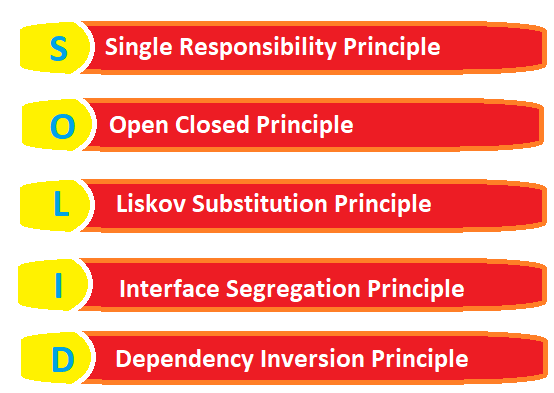C# Expert
Elevate your C# skills with expert-led tutorials. Ace interviews using our curated C# interview questions. Your path to mastery starts here!
LINQ Join with Multiple Conditions in C# (.Net) 2024
Introduction (LINQ Join with Multiple Conditions) LINQ Join with Multiple Conditions in C# (.Net) : In the world of .NET development, LINQ (Language Integrated Query) plays a pivotal role in simplifying data manipulation and querying operations. Among its many features, LINQ joins allow developers to combine data from multiple sources based on specified conditions. In this blog post, we’ll explore the intricacies of LINQ joins with a focus on incorporating multiple conditions into our queries. Understanding LINQ Joins LINQ supports various types of joins, mirroring those found in SQL: Here’s a basic example demonstrating the syntax of a simple LINQ join: Adding Multiple Conditions to LINQ Joins While single-condition joins…
Exploring C# Record vs Class 2024
Introduction Record vs Class c# : Understanding the nuances between C# record vs class is essential for crafting efficient and maintainable code. In this blog post, we’ll dive into the distinctions between these two constructs, examining their features, use cases, and performance implications through practical examples. Whether you’re a seasoned C# developer or just starting, mastering the differences between record vs class will enable you to make better design decisions in your projects. What is Class in C#? In C#, classes serve as blueprints for creating objects. They encapsulate data and behavior, offering flexibility and extensibility in your codebase. Let’s consider a classic example of a Person class: In this…
Mediator pattern c# example 2024 (Mediator design pattern c#)
The Mediator Design Pattern in c# falls under the category of Behavioral Design Patterns. Mediator Pattern c#‘s primary purpose is to reduce communication complexity between multiple objects by centralizing complex communications and control. Here are the key points: What is the Mediator Design Pattern? According to the Gang of Four (GoF) definitions, the Mediator pattern defines an object that encapsulates how a set of objects interact with each other. It promotes loose coupling by preventing objects from explicitly referring to each other. Instead, they collaborate only via a mediator object. The mediator handles communication complexities between different objects. Example of Mediator Design Pattern in C#: Facebook Group and ATC Imagine a Facebook group where members can…
Understanding of What is Middleware in C# (.Net Core) 2024
Certainly! Let’s dive into the fascinating world of what is middleware in c# (.Net Core). In this blog post, we’ll explore what middleware is, how it works, and provide examples to illustrate its usage. What is Middleware in C# (ASP.NET Core)? Middleware in C# is a crucial concept in ASP.NET Core. It refers to a series of components that are assembled into an application’s request processing pipeline. Each middleware c# component has a specific task or responsibility and processes incoming requests or outgoing responses. Think of middleware as the building blocks that handle specific tasks during the request-response cycle. Here are some key points about c# middleware: Example: Creating Custom Middleware in c#…
Check out whats new features are coming in .Net 9
.Net 9 : Exciting news in the world of C# and .NET! Following the successful release of .NET 8, Microsoft wastes no time and has already rolled out the first preview of .NET 9, giving us a glimpse into its ambitious vision for the future. The key focus areas for .NET 9 include: Productivity enhancements: Developers can look forward to new features in Visual Studio and Visual Studio Code, thanks to .NET Aspire, which aims to elevate the developer experience and streamline workflows. Intelligent app development: .NET 9 aims for deeper integration with AI capabilities, providing developers access to OpenAI and OSS models through libraries and documentation, empowering them to…
Value Type and Reference Type in C# – A Guide to Value vs. Reference Types in C#
When it comes to working with data in C#, understanding the difference between value types and reference types in c# is crucial. These two fundamental data type categories determine how data is stored, manipulated, and passed in your C# programs. In this blog post, we will delve into the concepts of value type and reference type in C#, explore their differences, and provide examples to illustrate their usage. Value Type and Reference Type in C# In C#, data types are broadly categorized into two main categories: value types and reference types. Let’s take a closer look at each of these categories: Discover a wealth of C# interview questions by visiting…
Singleton Design Pattern in C# with Example A Step-by-Step Guide to Implementing the Singleton Design Pattern in C#
In the realm of software design, certain patterns emerge as go-to solutions for common programming challenges. One such pattern is the Singleton Design Pattern, which is particularly pertinent in C# development. In this article, we will delve into the intricacies of the Singleton Design Pattern and provide a comprehensive example of its implementation in C#. Introduction to Design Patterns Design patterns are established solutions to recurring software design problems. They offer developers a common language and framework to address challenges systematically. The Singleton Pattern is a prime example, providing a solution for managing a single instance of a class throughout an application’s lifecycle. Understanding the Singleton Design Pattern The Singleton…
Mastering the Factory Design Pattern in c# :Benefits of Using the Factory Design Pattern in C#
Introduction The “Factory Design Pattern in C#” offers a versatile solution in the dynamic realm of software development, addressing the efficient creation and management of objects – a cornerstone of writing robust, maintainable code. Design patterns are the keys to recurring challenges, and within these patterns, the Factory Design Pattern stands out. This article serves as your compass, guiding you through the intricacies of the Factory Design Pattern, specifically within the context of C# programming. As we delve into this exploration, you’ll amass a comprehensive toolkit, empowering you to optimize your object creation practices and seamlessly streamline your codebase. Discover a wealth of C# interview questions by visiting our page…
Learning SOLID Principles C# with Examples : Best Practices, Applying SOLID principles in c# to write better C# code
Introduction solid principles in c# : As a software developer, writing code that is not only functional but also maintainable and scalable is crucial. This is where SOLID principles c# with example come into play. SOLID is an acronym for five essential design principles that help developers create robust, flexible, and maintainable code.In the upcoming blog post, we will delve into practical code examples in C# to comprehensively understand each of these principles. By the conclusion of this exploration, you’ll possess a profound grasp of effectively implementing these essential guidelines within your own projects. Unlock the potential of software design with the Factory Design Pattern in C#, revolutionizing efficient object…
Master the Top Advanced C# Interview Questions and Answers 2024
Introduction Are you preparing for a C# interview Questions and feeling a bit nervous about it? Don’t worry; we’ve got you covered! Our comprehensive guide on “C# Interview Questions and Answers” is here to equip you with the knowledge and confidence you need to tackle the interview like a pro. Whether you have 5 years of experience or a decade, this article is tailored to cater to your needs and help you stand out among other candidates. C# is a powerful and widely used programming language, especially in the realm of Microsoft development. It serves as the backbone of many applications, including web, desktop, mobile, and cloud-based solutions. As you…



